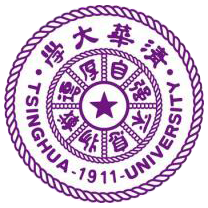刘劲刚
校特聘教授﹑博士生导师﹑无机化学博士点导师组组长
招生专业: 无机化学﹑应用化学
联系方式:
Email: liujingang@ecust.edu.cn
电话: 021-64252773
地址:上海市梅陇路130号华东理工大学
化学与分子工程学院,实验三楼315室
2000年6月毕业于中山大学,获理学博士学位(Ph.D.)。毕业后于同济大学化学系任教。2001年8月至2011年8月于日本九州大学先后任日本学术振兴会外国人特别研究员(JSPS Postdoctoral Fellow)﹑学术研究员﹑特任准教授及WPI准教授。2011年9月起任华东理工大学校特聘教授。在Angew Chem. Int. Ed.; J. Am. Chem. Soc.; Chem. Commun.; Inorg. Chem.等国内外期刊发表SCI收录论文三十多篇,论文总引用达1200余次,其中两篇论文他引超120次。作为项目主持人先后完成了日本学术振兴会(JSPS)博士后基金和青年基金各一项;日本文部省新学术领域研究基金一项。作为项目主要参与人员先后参与完成了多项日本学术振兴会和文部省的科研基金包括JSPS大型课题-基础研究(S)和文部省的元素战略项目等。
主要研究业绩有: (1)通过合成出的一系列手性钌及钴配合物与DNA的作用研究,深入探讨了手性钌配合物与DNA的键合及识别机理和规律。首次发现了金属钌配合物的左右旋异构体与DNA的不同键合速率,并从分子水平上对其进行了阐明;(2)首次设计合成了含共价铰链的组氨酸-酪氨酸细胞色素C氧化酶活性中心的化学模型化合物,并实现了其键合、活化小分子氧的功能模拟,为彻底解明细胞色素C氧化酶对双氧的活化机理提供了化学模型证据;(3)首次用模型化合物在溶液中捕获到血红素金属蛋白酶反应的关键中间体血红素-过氧化物(heme-peroxy)和血红素-过氧化氢物(heme-hydroperoxy),并用各种光谱对其进行了全面表征。该研究成果解决了30多年来一直困扰生物无机化学方面悬而未决的难题。相关研究成果同时被英国著名杂志“自然”(Nature 2010, 463, 168-169.)和德国“应用化学”(Angew.Chem. Int. Ed. 2010, 49, 2099-2101.)刊登亮点评论文章进行了重点介绍。“Nature”评论认为“该作者的发现是仿生化学领域的一个重大进展,他们的发现将有助于阐明这些不可缺少的血红素金属蛋白酶的反应机理。”日本的新闻媒体包括“读卖新闻”(2009年10月31日)、“科学新闻”(2009年11月13日)和“西日本新闻”(2009年10月31日)对其也进行了报道。
研究领域:生物无机化学
主要研究方向:
(a) 无机纳米药物及靶向定点光控无机药物释放。
(b) 二氧化碳的光催化转换。
(c) 氧分子的活化还原与燃料电池电极表面催化剂。
(d) 金属蛋白酶活性中心的结构与功能模拟及小分子活化。
代表论文:
1. Formation of an End-On Ferric Peroxo Intermediate upon One-Electron Reduction of a Ferric Superoxo Heme, Liu J.-G., Shimizi Y., Ohta T., Naruta Y.*, J. Am. Chem. Soc. 2010, 132, 3672-3673.
2. Spectroscopic Characterization of a Hydroperoxo-Heme Intermediate of a Synthetic Model: Conversion of a Side-on Peroxy to an End-on Hydroperoxy Complex, Liu J.-G., Ohta T., Yamaguchi Y., Ogura T., Sakamoto S., Maeda Y., Naruta Y.* Angew. Chem. Int. Ed., 2009, 48, 9262-9267(VIP paper). Highlighted in Nature, 2010, 463, 168-169, and in Angew.Chem. Int. Ed. 2010, 49, 2099-2101
3. Synthetic Models of the Active Site of Cytochrome c Oxidase: Influence of a Tridentate or Tetradentate Copper Chelate Bearing a His-Tyr Linkage Mimic on Dioxygen Adduct Formation by Heme/Cu Complexes, Liu J.-G., Naruta Y.*, Tani F., Chem. Eur. J. 2007, 13, 6365-6378.
4. Characterization of the Phenoxyl Radical in Model Complexes for the CuB Site of Cytochrome c Oxidase: Steady-State and Transient Absorption Measurements, UV Resonance Raman Spectroscopy, EPR Spectroscopy, and DFT Calculations for MII-BIAIP, Nagano Y., Liu J.-G., Naruta Y.* , Ikoma T., Tero-Kubota S., Kitagawa T.*, J. Am. Chem. Soc., 2006, 128, 14560-14570.
5. A Functional Model of the Cytochrome c Oxidase Active Site: Unique Conversion of a Heme--peroxo-CuII Intermediate into Heme-superoxo/CuI A Functional Model of the Cytochrome c Oxidase Active Site: Unique Conversion of a Heme--peroxo-CuII Intermediate into Heme-superoxo/CuI , Liu J.-G., Naruta Y.*, Tani F., Angew. Chem. Int. Ed., 2005, 44, 1836-1840.
6. “Formation and spectroscopic characterization of the dioxygen adduct of a heme-Cu complex possessing a cross-linked tyrosine-histidine mimic: modeling the active site of cytochrome c oxidase”, Liu J.-G., Naruta Y., Tani F., Chishiro T. Tachi Y., Chem. Commun., 2004, (1), 120-121.
7. “Interaction of [Ru(dmp)2(dppz)]2+ and [Ru(dmb)2(dppz)]2+ with DNA: Effects of the ancillary ligands on the DNA-binding behaviors”, Liu J.-G., Zhang Q.-L., Shi X.-F., Ji L.-N., Inorg. Chem., 2001, 40 (19), 5045-5050.
8. “Shape- and enantioselective interaction of Ru(II)/Co(III) polypyridyl complexes with DNA” Ji L.-N., Zou X.-H., Liu J.-G., Coord. Chem. Rev., 2001, 216, 513-536.
9. “Enantiomeric ruthenium(II) complexes binding to DNA: binding modes and enantioselectivity”, Liu J.-G., Ye B.-H., Zhang Q.-L., Zou X.-H., Zhen Q.-X., Tian X., Ji L.-N., J. Biol. Inorg. Chem., 2000, 5 (1), 119-128.







